Customizability: Article #2 – Paladins
Paladins, aside from its champion roster, also has a rather good customization system. A two-tiered one, in fact. Aside from a card system where you build your loadout deck before the start of the round, there’s also a item system where you buy items you need while playing.

We’ll start with the former, as it is the main customization option available in the game. Paladins uses a point-based system along with its cards. You don’t directly alter the champions’ kits, but you can pick cards that enhance the skills or add additional attributes to it. Each champion has sixteen cards, with twelve of them affecting a skill and four of them directly affecting the champions’ attributes and primary fire. There are also three Legendary Cards to choose from. By default, you have five cards and one Legendary Card unlocked, but you can get more by opening chests and spending Essences, which are obtained from having duplicate cards in chests.
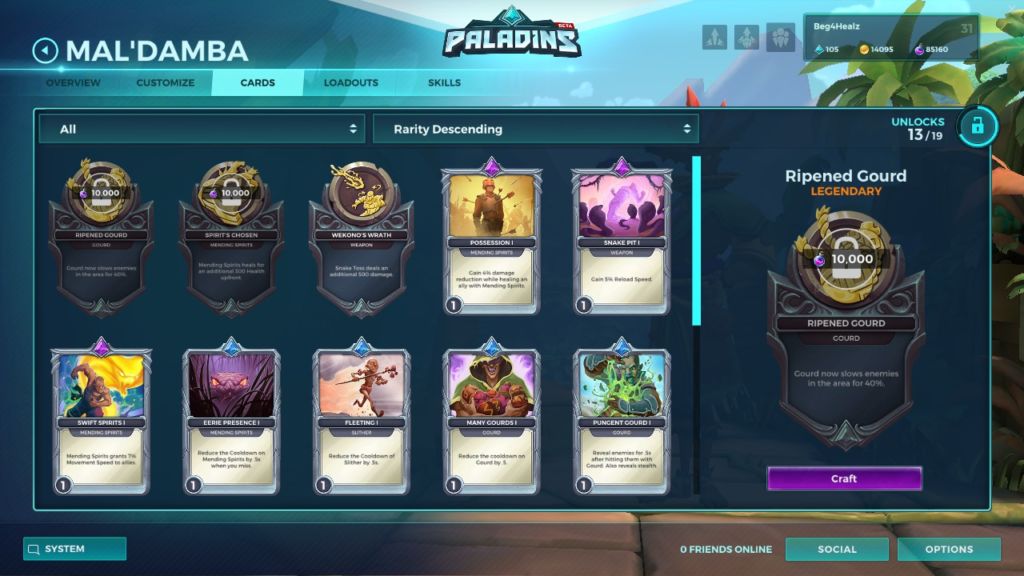
The cards used to be unlocked with 1500 gold each, since the Essence system was not introduced back then. It was added in along with the Legendary card system. If you do want to know more about the Essence system and the controversy behind it, you can read about it here and here. I won’t say much about it since there are already two articles about it. Still, the fact that cards have rarity that seems to be randomly assigned and affects the amount of Essence required to unlock is rather stupid. Also, the Legendary Cards are way too expensive.
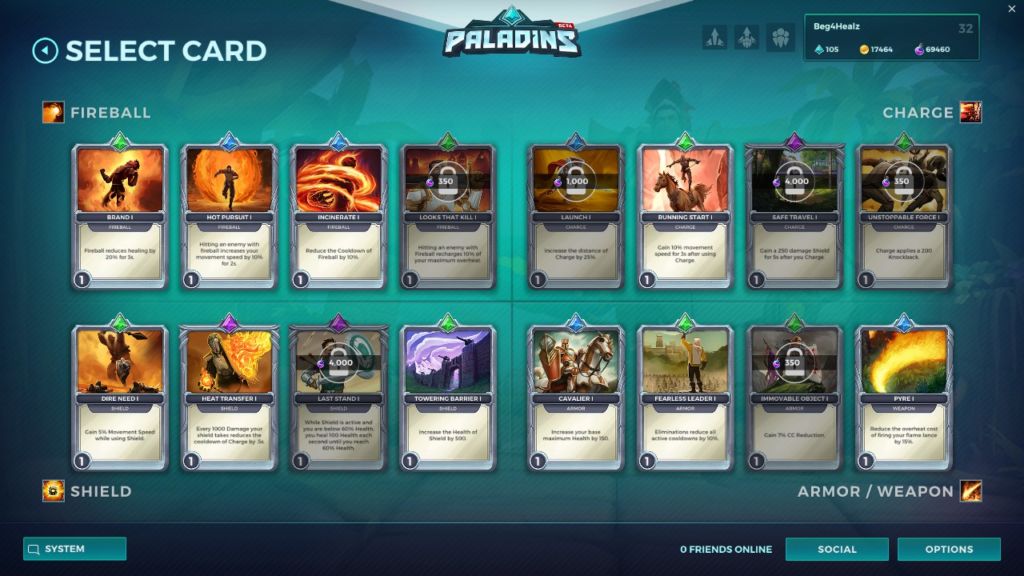
As mentioned previously, there are sixteen cards, with twelve of them corresponding to a particular skill (RMB, Q, and F), and your main weapons/armour (LMB). Ultimates (E) are not affected by loadout cards at all. In Paladins, a champion will always have the kit he or she is given. Say, if I play as Fernando I will always have a Flame Lance, Shield, Fireball, Charge, and Immortality. But I can have a loadout the focuses on being tanky (buffing my shield and armour) or offense (buffing my Fireball and Lance, as well as my Charge for mobility).
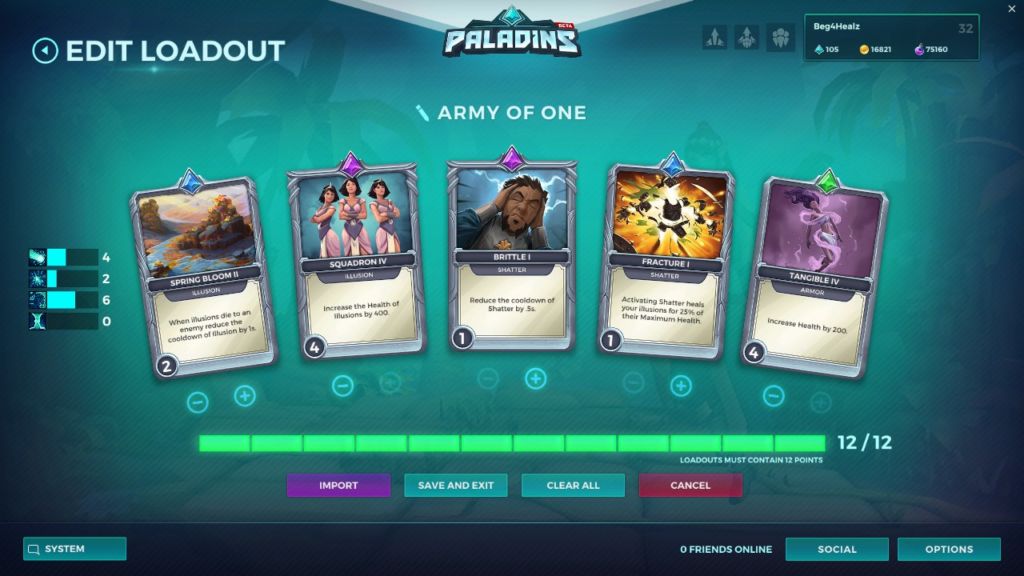
Once a player pick five cards, he or she will need to allocate points for it until the total number of points between the five cards add up to exactly 12. The more points allocated to a card, the stronger its effects will be. If you’re new and unsure on how to build your deck, you can actually import one from either your friends or the top Ranked players for that particular champion with the purple Import button at the bottom. As for me, I generally don’t do that since I normally try to work out a playstyle I like before fixing on a loadout.
The point system is rather fiddly, no denying it. Since there is already a loadout system that alters your kit, another system that alters the loadout that alters your kit seems to be another layer of complexity that could be removed. I personally like the fiddlyness of it, but this is a YMMV thing. For me, this option to further micromanage my loadout is great since I can choose which particular aspect I want to emphasize on even further. After all, the reason why I like having a loadout system is due to the freedom it grants me to design something that fits my playstyle.
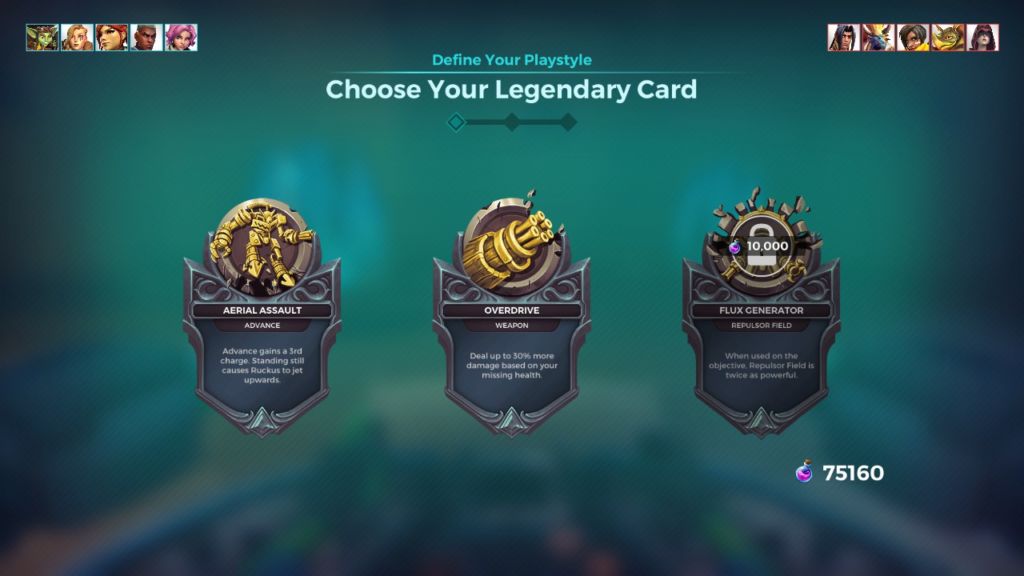
Before the match starts, you’ll first choose the champion you’re going to play as, which will lock you into that choice for the rest of the match. You then choose your Legendary Cards.
The Legendary Cards work the same way as your regular cards, except that a) they are not bound to any loadout you build, b) there are no point systems associated with them, and c) as the name suggests, having a Legendary Card for a particular skill equipped boosts the skill’s power tremendously, far above what even a maxed-out card can do.
The Legendary Cards are, in a sense, an independent system from your card loadouts, and technically speaking, they are. Strictly speaking, your loadout choices does not affect the Legendary Card you pick and vice versa. But the Legendary Card system is actually an extension of your card loadout. You can, for example, pick the Legendary Card Rampant Blooming (extra healing over time) for Grover to go with a healing loadout, in order to maximise the amount of healing done. Or you can pick the Legendary Card Deep Roots (allows you to Root enemies) to provide some utility on top of your healing.
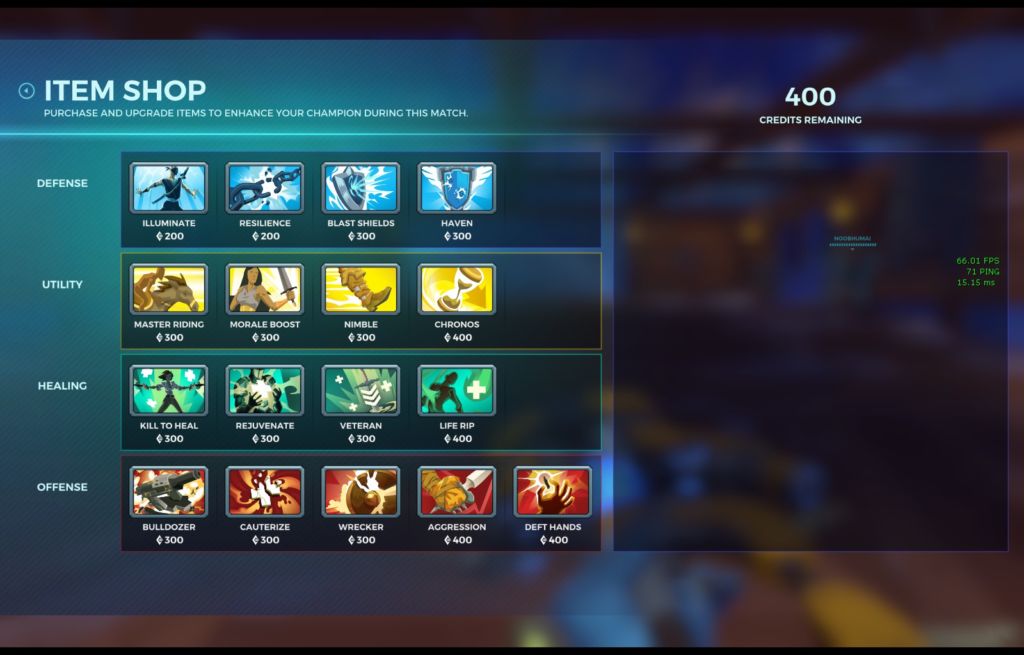
And lastly, there are Items, which were used to be known as Burn Cards. When you contest objectives, heal, shield allies from damage, deal damage, kill, and generally not idling in the spawn room or some random corner twiddling your thumbs, you’ll earn Credits. Aside from that, you’ll start a game with a fixed amount of Credits (400 Credits in Siege and Onslaught, 1000 Credits in Payload). With these Credits, you can buy Items to counter the enemy team build, or that particular enemy player that’s been giving you trouble. For example, if the enemy team mostly uses hitscan damage, you’ll buy Haven to reduce the damage taken. If they mainly use AoE damage, you’ll buy Blast Shields.
Aside for countering the enemy team, the Items you buy also depends on your playstyle. As Barik, I will always buy Master Riding first. This is because I like to rush to the point first and set up a turret before the enemy team arrives. Buying Master Riding gives me the extra setup time I need to establish my presence on the point, which I find to be quite good for me.
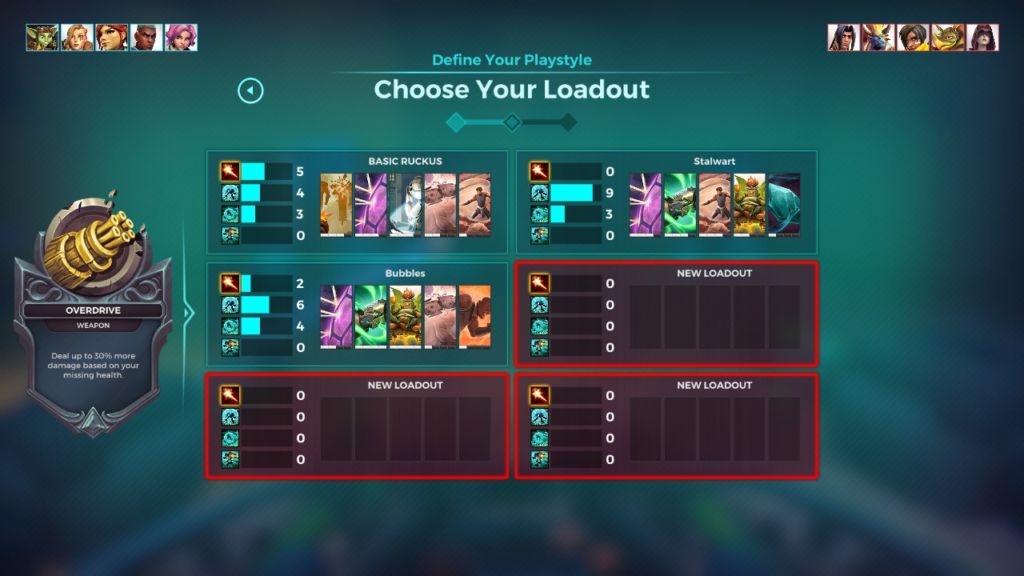
The loadout system in Paladins is somewhat complex, but it does give players a fair amount of freedom in deciding how they want to play. Gameplay-wise, it’s a rather good system. My only problem is with the business model Hi-Rez picked. Sure, they made it easier to get the cards now, but I always feel that the addition of the Essence system works against the players’ interest.
But still, it’s a really good system. The loadout system, I mean. Essence can go to hell (EDIT: and it did. Good riddance).
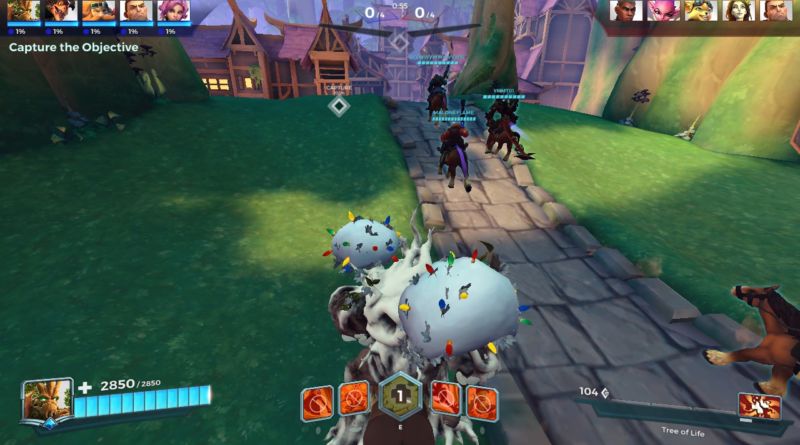
Slight correction, cards used to cost 1200 gold, not 1500 as stated in the article. Sorry.